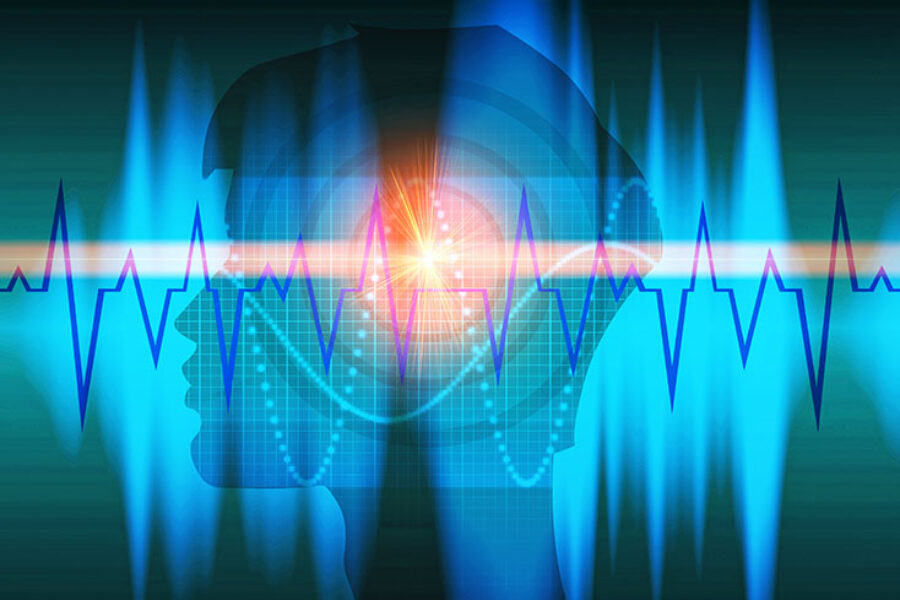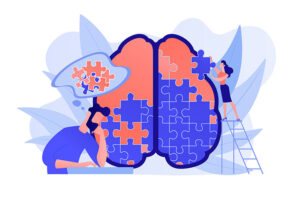By Matthew J. Fleischman, PhD, Henry M. Kaiser, PsyD, MBA and Darla Meulemans, MA, CADC
How many people have tried talk therapy and made progress, but ultimately felt that it wasn’t enough? How many patients have tried medications and still experienced severe symptoms? Probably too many to count.
What if there were a way of reducing symptoms of depression, anxiety, trauma and attention problems that could complement talk therapy and medication? A new approach to treatment called “neurofeedback” yields promising results of this nature.
Now, when we describe this method as “new,” we simply mean that it’s new to the mental health care system. In fact, neurofeedback has been around for over 50 years and has inspired more than 2,400 published papers — and practitioners have used this approach in over 250,000 sessions to date.
Neurofeedback addresses problems with mental health from an entirely different direction — by training our brains to better self-regulate.
When self-regulation improves, symptoms lessen. Imagine the impact on any individual with a mental health condition if they were able to sleep better, focus better, feel less anxious and react less impulsively. This is why we, The Neurofeedback Advocacy Project (NAP), believe this treatment approach should be widely implemented in more health and mental health care settings.
What Is Neurofeedback?
The brain has a physical structure made up of over 100 billion neurons, specialized cells that transmit information. Neurons are influenced and controlled by various neurochemicals, such as neurotransmitters like serotonin, to affect and regulate all of our mental processes. This is the foundation for psychotropic medications: by using a medication to influence the levels and interactions of certain neurochemicals available in the brain, we can affect the resulting mental processes.
The brain is also a complex informational network. Electro-chemical information is transmitted between neurons through a vast web of over 125 trillion synapses (the gaps between the cells). In order to perform well, this cell-to-cell communication system must be smooth and in sync. Like any other complex system, it requires constant feedback in order to self-regulate.
For example, consider the heating and air system in a building. The thermostat constantly measures the temperature of the room and provides feedback to the system. If the temperature is too high, the thermostat sends a signal to turn off the heat. The brain operates in a similar (although significantly more complex) fashion.
The brain constantly monitors its own electro-chemical activities and uses that feedback to adjust. Any issues with that internal monitoring — dysfunction in the neurofeedback system — can result in dysregulation. When stress has disrupted communication within our brain’s network, it cannot effectively regulate itself, disrupting normal functions and impacting mental processes.
Our understanding of this feedback regulation system has evolved significantly over the years. Early research focused on “biofeedback,” influencing the body in order to affect different processes. For example, we learned that changing the temperature of a person’s hands could help them relax. One scientist discovered that using milk as a reward could alter brainwave patterns in cats, improving calm focus and ultimately preventing the cats from having seizures.
As we learned more about biofeedback, research evolved to focus specifically on the regulatory process of the brain — neurofeedback — and include experiments in humans with a variety of conditions including epilepsy, ADD/ADHD, anxiety, and PTSD.
What Does Treatment Look Like?
Neurofeedback has come a long way in the 50 years since the initial breakthrough with cats. Now, in a neurofeedback session, the patient sits in a comfortable chair where they either play a video game or watch a movie. The practitioner places sensors, which read brainwaves, onto the patient’s scalp. Over two to three sessions, the practitioner develops an understanding of that individual’s brainwaves, determining what levels and patterns are “optimal” and lead to the most effective functioning.
Once the practitioner has identified the optimal brainwave setting for the patient, treatment begins. Specialized software monitors the patient’s brainwaves, and when it identifies positive or desired patterns, it alters what the patient sees on the TV screen. For example, boosting the speed of the car they are controlling in a video game or increasing the size of the viewing window for their movie.
As the treatment goes on, the patient’s brain automatically adjusts. It “recognizes” that specific brainwave patterns result in positive outcomes (the faster car or better view of the movie) and uses that feedback to adjust its functioning. This self-regulation happens naturally — there is no conscious effort by the patient.
During a session, a patient will typically talk to their practitioner about what they see on the screen, share their feelings or respond to questions, which helps the practitioner confirm that the sensor placement, brainwave readings and software actions are correct.
At the end of a session, the patient and their practitioner review the recorded progress. The goal is for patients to experience a reduction in symptoms over the course of a typical 20-session course of treatment. By helping the brain “learn” to connect specific brainwaves with positive outcomes, we help it learn to regulate itself, improve overall functioning and support healthy mental processes.
While neurofeedback is not a replacement for psychotherapy and medications, it is an excellent complement. Research shows that people who incorporate neurofeedback into their treatment plan feel better able to engage with therapy and implement therapeutic suggestions — and they often need fewer medications.
While neurofeedback has been gaining credibility rapidly, recently, it has been available only from private practice providers on a fee-for-service basis. The NAP is working to change this. Our mission is to implement neurofeedback within agencies and healthcare systems, particularly for those who are underserved or difficult to serve.
Our hope is for recent advances in neuroscience to improve mental health care and enable providers to rely more on the brain’s capacity for self-healing.
Dr. Matthew Fleischman is a clinical psychologist with 30 years’ experience with neurofeedback. He served as an NIH Principal Investigator on a Multi-site Implementation of Treatment of Aggressive Children. He started the NAP by lending neurofeedback equipment to three local agencies serving a range of clients to see how effective the method could be. Based on that experience, the project has expanded to 15 more agencies and is recruiting another 25.
Dr. Henry M. Kaiser served as a Director of Kaiser Foundation Hospitals & Health Plan and a Trustee of the Kaiser Family Foundation. His various professional venture capital and entrepreneurial activities have in common the theme of working with innovation in corporate and/or entrepreneurial settings, in technology and in life sciences.
Darla Meulemans, MA, CADC has a private wellness practice in Portland, Oregon. Darla’s career includes more than 15 years of direct service and leadership in community mental health and addiction treatment in addition to running school and hospital-based programs. Darla provides professional training and mentoring to clinicians using neurofeedback.
Source: https://nami.org/Blogs/NAMI-Blog/August-2021/Neurofeedback-A-Complement-to-Talk-Therapy-and-Medication




